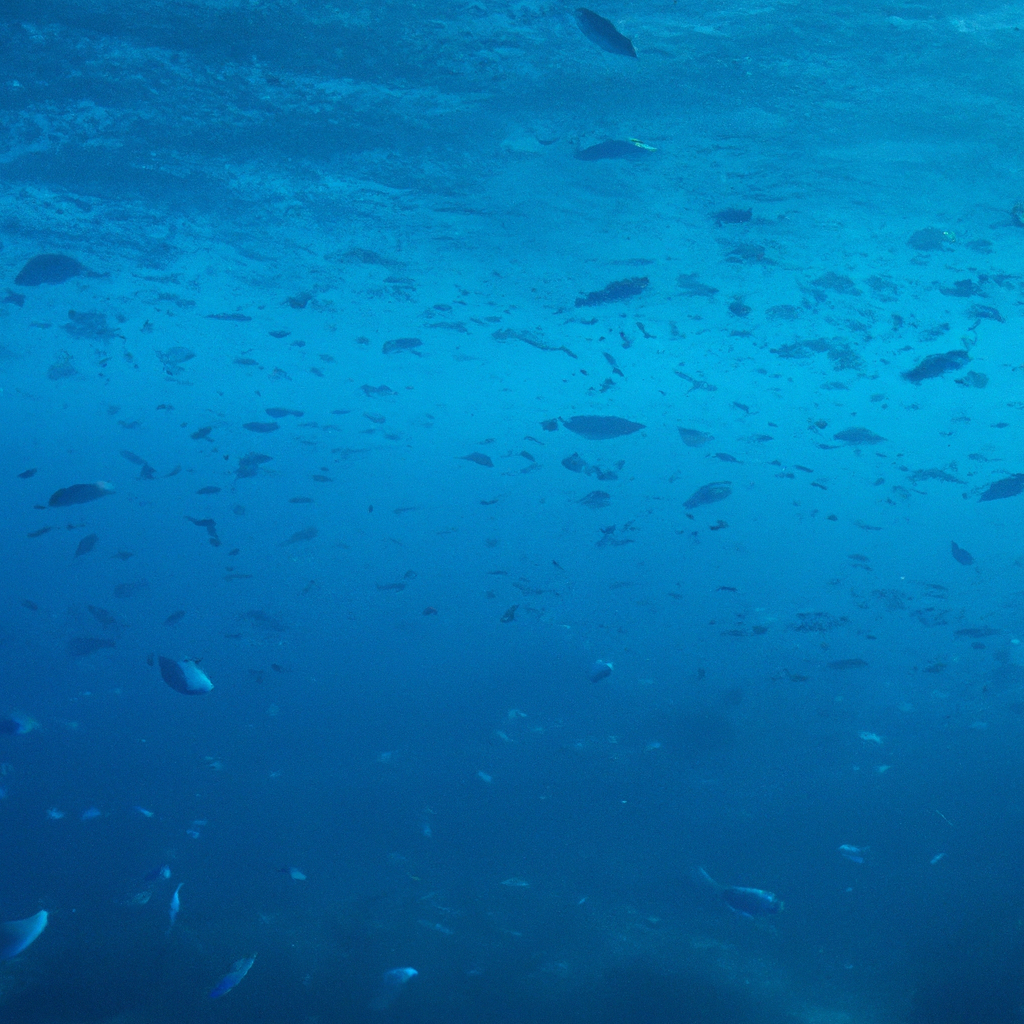
The concept of living on Mars has captivated the imagination of humanity for centuries. The thought of a new world to explore, discover and inhabit provides an exciting opportunity that is difficult to ignore. This article will discuss the possibility of humans ever living on Mars in the future and what it could mean for our species as a whole.
In recent years, advances in technology have enabled scientists to make great strides towards understanding this potential reality. Robotic missions such as NASA’s Curiosity rover are providing us with invaluable insights into the terrain, atmosphere and resources available on Mars which can help inform decisions about whether human habitation is possible. Additionally, private companies such as SpaceX have expressed ambitions to establish settlements on the Red Planet.
It is clear that there are many factors to consider when evaluating the prospect of human life existing beyond Earth’s boundaries. In order to properly assess this possibility, it is necessary to understand how these technological developments may influence society at large and whether or not we should embrace them if they become feasible options in the near future.
Mars red planet in spaceHistory Of Mars Exploration
Mars has long been of interest to scientists and the public alike. Since its discovery in ancient times, it has held a special place as the closest planet to Earth. In recent centuries, advances in technology have enabled us to explore Mars more closely, through both spacecrafts and telescopes.
The first probes sent to study Mars were launched by the Soviet Union during the 1960s. These early missions yielded important scientific data about the planet’s atmosphere, surface temperature, magnetic field strength and other properties. They also helped inform subsequent mission plans for further exploration of Mars.
NASA followed suit with their own series of robotic probes beginning in 1975; these later included orbiters and landers that conducted detailed studies of Martian terrain from different angles. The Curiosity Rover is perhaps one of NASA’s most famous accomplishments on this front: it arrived at Mars’ Gale crater in 2012 and continues to send back new information about the planet each day.
By combining all these sources of knowledge, we now know much more about Mars than ever before—which brings us closer to answering our original question: will humans ever live on Mars? To assess whether such an endeavor might be possible, we must examine not only its past but also current conditions on the Red Planet—namely its atmosphere and climate conditions.
Atmosphere And Climate Conditions On Mars
The atmosphere of Mars is like a thin veil, shrouding the planet in mystery and anticipation. Atmospheric pressure on the surface is only one percent that of Earth’s, making it difficult for humans to breathe without an oxygen mask or tank. The air consists primarily of carbon dioxide with trace amounts of nitrogen, argon and water vapor. Despite its low atmospheric density, Martian winds can still reach speeds up to 60 mph.
The climate conditions on Mars are harsh compared to those on Earth due to the planet’s distance from the Sun, lack of oceans and overall atmospheric composition. Temperatures range widely across the day-night cycle, reaching as high as 70°F during midday but plummeting to -225°F at night near the poles. During winter months temperatures drop even further, dipping down below -200°F in some areas. On average there is less than 1/8th inch of rainfall per year and frequent dust storms which can last weeks or even months depending upon their intensity.
Living on Mars would require specialized equipment capable of providing insulation against these extreme temperature swings while also protecting inhabitants from radiation exposure when outside during daylight hours. Additionally, measures would need to be taken to ensure that enough breathable air was available for extended periods of time before running out completely. With these challenges in mind, resources such as food and water become increasingly important factors in determining if human habitation could be sustained long term on this distant world.
Resources On Mars
The atmosphere of Mars is not hospitable to humans, but its resources could potentially be utilized by human colonists. As the fourth planet from the Sun, it has a number of minerals and elements that are similar to Earth’s including sulfur, iron oxide, magnesium, silicon dioxide and aluminum oxide. The surface also contains vast amounts of frozen water in polar ice caps which can be melted for drinking water and used for crop irrigation or even converted into oxygen through electrolysis.
Furthermore, there are significant potential sources of energy on Mars such as volcanic activity for geothermal power generation or solar panels to collect sunlight and generate electricity. Additionally, due to its proximity to Earth compared to other planets in our Solar System, Martian settlers could use radio wave transmission technology developed on Earth for communication purposes.
These available resources may provide an opportunity for long-term habitation of Mars if technological challenges can be overcome. Further exploration is needed to determine how viable these options are before any serious plans can move forward. To this end, robotic missions have already been launched with the aim of gathering information about the red planet’s environment and resources so that future human colonies may one day inhabit it successfully.
Technological Challenges
As time immemorial, humans have wanted to reach out and explore the unknown; however, living on Mars presents a whole new set of challenges. To begin with, there are many technological hurdles that must be overcome in order for a human settlement on Mars to become reality. The greatest challenge lies in providing the necessary infrastructure for a functioning society away from Earth. This includes developing systems capable of supplying food, water, oxygen, and energy – all of which will need to be designed for use in an environment lacking existing resources. In addition, methods must be developed for safely transporting people from Earth to Mars and back again without exposing them to radiation or other hazards posed by deep space travel. Finally, once on Mars, astronauts will need access to reliable communication networks as well as medical care and equipment suitable for dealing with any health issues they may encounter while on mission.
The next step is exploring potential settlement plans that could make life on Mars possible.
Proposed Settlement Plans
The technological challenges for humans to live on Mars are numerous, yet the proposed settlement plans provide paths towards a successful human presence. The most important of these is constructing habitat systems that can sustain life in the harsh Martian environment. This includes finding suitable locations for habitats, creating shielding from harmful radiation levels and building pressurized living spaces with oxygen-rich atmospheres. Further research into advanced technologies is required to make long-term habitation possible; such as developing more efficient energy sources and improving communication methods between Earth and Mars.
Additionally, food production needs to be considered when discussing potential settlements on Mars. It is estimated that some form of agriculture will need to be developed to ensure an adequate supply of dietary resources over extended periods of time. In this regard, it has been suggested by scientists that hydroponics may offer a viable solution since it would allow plants to grow under conditions that are not necessarily ideal. Additionally, there have been proposals for launching robotic probes ahead of any manned mission which could assess the planet’s surface and begin terraforming efforts before humans arrive.
These settlement plans serve as a starting point for further exploration into making Mars habitable for humans but do not address other key areas. One primary area which requires attention is safety concerns – both during transit and post arrival – regarding medical issues including radiation exposure, psychological health issues due to isolation, dust storms or civil unrest if multiple nations attempt colonization simultaneously. With this in mind, assessing ways to mitigate risks associated with prolonged inhabitation away from Earth merits significant consideration prior to attempting permanent settlements on Mars.
Safety Concerns For Humans Living On Mars
The prospect of humans living on Mars poses many safety concerns. The environment on the planet is extreme and inhabitable, with temperatures ranging from -195°C to 27°C, low atmospheric pressure, hazardous dust storms and lack of oxygen. These conditions make it difficult for astronauts to survive without the aid of specialized equipment and protective suits. Additionally, radiation levels are higher than those found on Earth due to a weak magnetic field which provides little protection against cosmic rays and solar flares.
Furthermore, there are potential hazards posed by the mining activities necessary for extracting resources like water ice or metals from Martian soil. Uncontrolled explosions caused by volatile compounds such as perchlorates could harm both human life and any robotic units tasked with carrying out these operations. There would also be high risk associated with any manned missions travelling between the planets should current technology prove inadequate in sustaining reliability during long-distance space travel.
In light of these challenges, research into developing technologies that can mitigate risks related to living in an extraterrestrial environment must be conducted before plans for colonizing Mars can be realized. As such, understanding how long-term exposure to Martian gravitation affects human health becomes integral in ensuring astronaut safety when they embark upon their journey towards establishing a permanent settlement on Mars.
Impact On Human Health
The tantalizing prospect of living on Mars has long captivated the imagination. A red sky and an orange horizon, a vast expanse of unknown land that could be explored; to many it provides an exciting vision of what might one day be achieved. But before any such ambition can become reality, there are important considerations related to human health that must be assessed in order to determine if humans can safely exist in the harsh Martian environment.
Firstly, radiation exposure is a major concern for anyone travelling or residing on the Red Planet. The planet’s atmosphere is much thinner than Earth’s and does not provide adequate protection from dangerous solar flares and cosmic rays which can cause harm to astronauts over prolonged periods of time. To address this issue, scientists have proposed various methods for shielding spacecrafts from harmful radiation levels including thick walls made from leaded glass or aluminum plating as well as special clothing materials designed to protect against intense UV light.
In addition, the low atmospheric pressure on Mars poses another significant challenge for prospective inhabitants. Humans need oxygen-rich air at higher pressures in order to breathe comfortably, so engineers will have to develop systems capable of providing suitable air pressure inside habitats while also allowing its easy replenishment with fresh air from outside sources. This may involve using pressurized cylinders filled with compressed gases or building complex filtration systems that extract nitrogen and other essential elements from the atmosphere before pumping them into dwellings where they can be breathed by occupants without causing ill effects.
Finally, food production presents yet another obstacle preventing humans from setting up permanent residence on Mars. Growing crops in the unforgiving soil of the Red Planet would require advanced technological solutions such as hydroponic gardens where plants are watered and fed artificially through nutrient-enriched liquid solutions instead of natural sunlight and soil nutrients found naturally on Earth’s surface. Scientists are already developing prototype grow chambers destined for use aboard future space missions but whether these will prove successful when subjected to short or extended stays far away from our home world remains an unanswered question – one which requires further exploration before we can even begin considering humankind’s ultimate interplanetary dream: life among the stars! With these questions answered now turning towards cost and funding sources required for such a momentous undertaking…
Cost And Funding Sources
The cost and funding sources for a human mission to Mars have been widely debated. Estimates suggest that the total budget could range from tens of billions to hundreds of billions of dollars, depending on the scale and scope of the mission. Consequently, significant investments in research and development are necessary to make this dream a reality:
- Private companies must develop reliable technologies such as engines, fuel tanks, habitats, and communication systems.
- Governments will need to provide financial support via grants or tax incentives for key elements of the mission’s infrastructure.
- Intergovernmental organizations may also be called upon to coordinate collaborative efforts between public and private entities across multiple countries.
Funding these ambitious plans is no small feat; however, there are some promising initiatives underway with strong potential to bridge the gap financially and academically. The European Space Agency (ESA) has committed over one billion euros towards its Aurora Programme which seeks to explore opportunities in deep space exploration including missions to Mars by 2020-2025 timeframe. Similarly, NASA is currently developing their Journey To Mars program which aims at advancing human presence beyond Earth’s orbit by 2030 through numerous steps along the way including robotic precursor missions and eventually crewed flights into deep space destinations like Mars.
It has become evident that neither governments nor private enterprises can achieve this goal alone; thus it is essential for them come together and create an international consortium with shared objectives, resources, and responsibilities if they want humanity ever live on Mars – not only safely but sustainably too.
Impact On Earth’S Environment
The dreams of a future on Mars have long been burning in the hearts of humanity. The red planet beckons, its vastness and potential offering an invitation to explore new frontiers. But what implications would this exploration have for our own home? To answer this question, it is important to consider how human habitation of Mars could potentially impact Earth’s environment.
On a physical level, sending missions to and from Mars requires significant energy consumption that could produce negative impacts such as greenhouse gas emissions here on earth. In addition, any waste materials produced during space travel or sent back to Earth must be safely contained and disposed of without contaminating air or water supplies. It is also likely that the process of colonizing Mars will require significant resources extracted from Earth’s finite reserves, which themselves may cause further environmental damage.
From a behavioral perspective, human presence on another planet can lead to changes in attitudes towards conservation efforts at home. If humans are living elsewhere they may feel less compelled to protect their original home; reducing incentive for sustainable practices such as recycling programs or clean energy initiatives. It is possible that colonization of other planets might create a further disconnect between people and nature if citizens become accustomed to life away from their native environment.
These considerations highlight the need for careful thought about the consequences of settling outside our world before taking action. As with any major endeavor there is always risk associated with unintended side effects; however, by understanding these risks ahead of time we can plan accordingly to minimize potential consequences not just for ourselves but also for our planetary neighbors both near and far.
Legal And Ethical Considerations
The question of whether humans will ever live on Mars is complex, and involves numerous legal and ethical considerations. One major challenge that must be addressed before any human occupation of Mars can take place is the body of law which governs space exploration and colonization. In order to ensure a safe living environment for colonists, there are many issues that need to be resolved, such as who owns the land or resources on Mars, what laws should govern activities on the planet’s surface, how disputes between nations will be settled in an extraterrestrial setting, and more.
In addition to these issues, there are also ethical concerns associated with colonizing another world. For example, how would we protect the rights of Martian inhabitants? Who has authority over them? Are they subject to existing international treaties governing human rights? What kind of protection do they have from exploitation by other countries or corporations? These questions all need to be answered before humans can safely reside on Mars.
| Table 1: Legal & Ethical Considerations |
|---|
| Space Exploration Law |
| Ownership Rights |
| International Dispute Settlements |
These legal and ethical considerations present significant challenges that must be adequately addressed if humanity wishes to establish a permanent presence beyond Earth. The implications of this process extend far beyond simply addressing practical matters; it requires us to consider our own values and aspirations as a species – both collectively and individually – while recognizing our obligations towards future generations. As we grapple with these important topics, it becomes clear that determining the potential benefits of living on Mars will require careful thought and planning about how best to create a sustainable society for its citizens.
Potential Benefits Of Living On Mars
The potential benefits of living on Mars are numerous and far-reaching. For example:
- The human race would be able to expand its reach beyond Earth, exploring a new planet with vast resources available for use in scientific research and development.
- A successful settlement on the Martian surface could open up opportunities for space exploration as well as provide an alternative habitat for humans should a catastrophe occur on Earth.
- Living and working in such extreme conditions could also help us better understand how our bodies respond to different environments and even create room for innovation that can improve the quality of life here at home.
In addition, there is an exciting opportunity to make history by being among the first people to ever set foot on another world! This prospect has sparked interest from around the globe with governments getting involved in funding missions and initiatives aimed at making interplanetary travel possible within this century. Such enthusiasm has been met with many calls for collaboration between nations so that we may all benefit from any discoveries made during future expeditions to Mars. Furthermore, public support for establishing human settlements on other planets serves as a reminder that no matter where humanity ventures, we will always remain connected through our shared curiosity about what lies ahead in the universe. With these considerations in mind, the next section will address public support for human settlement on Mars.
Public Support For Human Settlement
Can public opinion be a catalyst for the colonisation of Mars? Despite numerous challenges, there is increasing support for human settlement on the Red Planet. A 2020 survey conducted by National Geographic found that almost three-quarters of respondents from around the world are in favour of sending humans to live and work on Mars permanently.
This enthusiasm appears to extend beyond just opinions expressed online or surveys taken: many private companies have already begun making plans to establish colonies on Mars. Elon Musk’s Tesla Motors recently announced its ambitious goal of building a self-sustaining city on Mars within the next decade. This initiative has gathered considerable attention, with the promise of new opportunities encouraging exploration into space travel technology.
Public interest in human colonization could lead to further scientific breakthroughs and technological advancements like those seen during previous eras such as the Apollo Program. With growing momentum behind this movement, it may not be long before we see people living and working off planet Earth – beginning a truly interstellar journey towards an interplanetary future.
Frequently Asked Questions
How Long Could A Human Survive On Mars?
The notion of human survival on Mars is a topic that has been discussed by scientists and space enthusiasts for decades. With the recent advancements in technology, this question has become more pertinent than ever before. How long could humans survive on Mars? This paper will discuss the current state of knowledge about living on the Red Planet, including its challenges and potential solutions.
Mars presents several unique environmental challenges to any possible human colonizers. The atmosphere of Mars is composed primarily of carbon dioxide; it does not protect from radiation like Earth’s atmosphere does. Temperatures can range from -140 degrees Celsius at night to 20 degrees Celsius during daytime, creating extreme conditions unsuitable for sustaining life as we know it. Additionally, there is an abundance of dust particles present due to frequent dust storms which would make breathing difficult outside a pressurized habitat or suit.
Nevertheless, there are solutions being developed with the intention of making Martian colonization feasible within our lifetime. For instance, 3D printing technology may be used to construct habitats outfitted with necessary amenities such as air filtration systems and energy production capabilities. In addition, special protective gear could be designed in order to combat radiation levels and maintain oxygen levels inside habitats. These advances suggest that humans may one day live safely on Mars if appropriate precautions are taken.
Although much work remains before human habitation is possible on Mars, these technological developments demonstrate great promise towards achieving this lofty goal within our lifetimes—a feat that was once thought impossible only a few years ago.
What Type Of Food Could Be Grown On Mars?
Studying the potential for food production on Mars is important to consider, when contemplating whether humans will ever be able to live there. To understand what type of food could potentially be grown in such an extreme environment requires a greater comprehension of both the planet’s conditions and human capability.
Mars has an average surface temperature around -80 degrees Fahrenheit and two-thirds of its atmosphere is comprised of carbon dioxide. Despite these hostile conditions, research suggests that certain crops can indeed grow in Martian soil. This includes plants like potatoes, tomatoes, peas and even wheat which have already been tested successfully under simulated Martian environments.
Though growing edible crops on Mars would require intensive engineering efforts from scientists, it appears increasingly possible given current technology. Utilizing efficient LED lights and hydroponic systems with specially designed fertilizers may enable humans to sustainably create viable sources of nutrition in this otherwise uninhabitable place. With further study and development, we may one day see signs of life on the red planet beyond just robots or rovers exploring its landscapes — but actual people enjoying homegrown fruits and vegetables as part of their daily meal plans!
Are There Any Laws Or Regulations To Consider When Settling On Mars?
As humans are increasingly exploring the possibility of living on Mars, they must take into account laws and regulations in order to successfully settle there. From policy-making to ethical considerations, these aspects provide an invaluable framework for understanding how this complex endeavor will play out over time. Thus, it is essential that we understand the implications of such a monumental undertaking.
In considering the legal ramifications associated with settling on Mars, one might look towards Earth’s own history for insight. For example, when Europeans colonized America in the 16th century, they established their own set of rules and governance structures which would facilitate both social and economic life on foreign soil. Similarly, any species wishing to inhabit Mars must be aware of what rights and responsibilities come along with inhabiting new land; otherwise chaos could ensue from miscommunication or confusion about who has control over certain areas or resources.
To further explore this concept, here are five key points to consider:
- Who decides upon the laws governing settlement?
- How can those laws be enforced if people live across multiple planets?
- What role should international organizations have in establishing a Martian society?
- Are existing Earth treaties applicable to extraterrestrial settlements?
- What ethical issues arise when claiming territory beyond our planet?
In light of these questions, it is clear that many challenges lie ahead as humanity pursues its dreams of interplanetary exploration and settlement. The development of appropriate policies and regulations may prove critical to ensuring successful colonization without sacrificing safety or respect for planetary boundaries. As such, leaders around the world must carefully examine all potential avenues before taking action – not just now but also well into the future.
How Would Mars Affect The Human Body Over Long Periods Of Time?
Exploring the implications of human habitation on Mars is an important consideration when determining if humans could ever live there. One aspect that must be taken into account is how long-term exposure to the Martian environment would affect a person’s physiology and well-being. While research has been conducted into this area, many questions remain unanswered as to what effects living in low gravity or extreme temperatures may have on an individual’s health over time.
The differences between Earth’s atmosphere and the air found on Mars present potential risks due to varying levels of radiation, oxygen pressure and composition. A lack of magnetic fields may also leave astronauts exposed to higher amounts of cosmic rays compared to those experienced by people here on Earth. Additionally, dust particles from the planet’s surface can pose respiratory problems for inhabitants, while decreased atmospheric pressure can cause other issues such as decompression sickness.
However, scientists are developing ways to counter these threats through protective garments, shielding technology, and medical treatments including preventive measures like vaccines for illnesses caused by alien bacteria found on Mars. Despite this progress though, much more study needs to take place before researchers can accurately determine how residing in space over extended periods will impact human physiology and behavior. It remains uncertain whether any amount of preparation would allow us to survive comfortably among the harsh conditions present on Mars—but with continued work towards understanding its environment better we might one day find out.
Is There Any Evidence Of Life On Mars?
Recent exploration on Mars has sparked speculation about the possibility of life existing beyond Earth. In 2019, NASA’s Curiosity rover detected organic molecules in Martian sedimentary rocks that could be evidence for past microbial activity. This discovery has led to further questions regarding whether there is any current evidence of life on Mars?
The surface environment of Mars is hostile due to its thin atmosphere and freezing temperatures, but it does not rule out the feasibility of subsurface habitats populated by microbes. To examine this prospect, researchers have investigated biosignatures within samples returned from the planet’s surface. A biosignature is an indication or trace of biological activity found in a sample; they can range from metabolic products such as amino acids and proteins, to fossils and bio-geochemical signatures like methane gas concentrations.
In recent years scientists have discovered traces of sulfur compounds which are produced by bacteria living in extreme environments here on Earth – potentially lending credence to the idea that similar organisms might exist deep beneath the surface of Mars. However, some argue that these sulfur compounds may also arise through non-biological processes so more research needs to be done before we can fully understand their origin. Additionally, studies continue into other molecular markers associated with life including ribonucleic acid (RNA) as well as potential biomarkers such as fatty acids and pigments which indicate active metabolism occurring near the surface.
Overall, although no conclusive proof exists yet for present-day life forms inhabiting Mars, considerable research is being conducted worldwide to help answer this question with greater certainty and clarity. By exploring what signs would conclusively demonstrate presence of extant organisms on our neighbouring world we will gain insights into how common extraterrestrial biology might actually be throughout space.
Conclusion
The potential for humans to one day colonize and inhabit Mars is a topic of great speculation. While the scientific community has made strides in understanding how a human might survive on the planet, there are still many unknowns that will need to be addressed before this goal can become reality. The challenges posed by living on an alien world such as Mars include food production, physical health effects due to the unique environment, and legal implications of extraterrestrial settlement.
A key factor in determining whether or not humans could live on Mars long-term would be the feasibility of growing edible crops on its surface. Research suggests that Martian soil composition could support certain types of plant life, allowing for sustainable food sources; however further study into creating agriculturally viable conditions remains paramount. Additionally, it is also necessary to consider what physiological effects may result from extended stays on another planet with different atmospheric pressure, gravity levels, and radiation exposure.
Finally, any hypothetical plans for inhabiting Mars must take into account existing laws governing space exploration and ownership rights over celestial bodies. It has been suggested that international cooperation may be needed if large-scale colonization efforts were ever attempted – much like our ancestors when they ventured off across oceans centuries ago in search of new lands. Although the dream of establishing a permanent presence on Mars seems like something out of science fiction today, continued advancements in technology and research could one day make this vision a reality – turning it into fact instead of fantasy.













